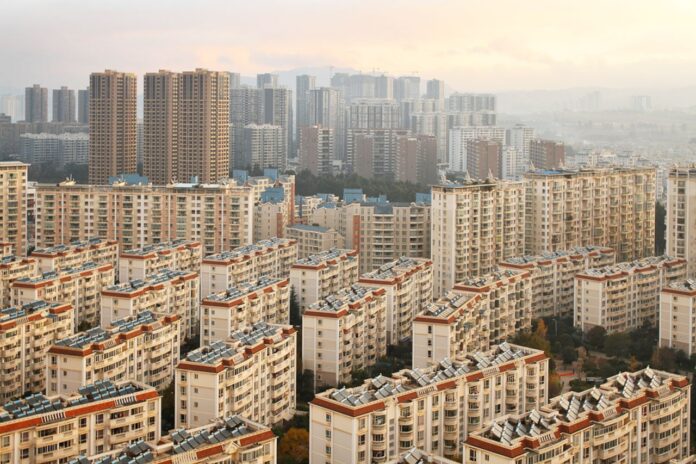By Gernot Wagner and Conor Walsh
Special to The Times Kuwait
China’s model of economic growth has been a resounding success. With its focus on export promotion, capital investment, and technological catch-up, it has lifted some 800 million people out of poverty over the past 40 years. More recently, it has done wonders for clean-energy deployment at home, as well as driving down the costs of renewables and batteries globally. In 2023 alone, China will have installed over 150 gigawatts of solar capacity – almost half the world’s total for the year.
But China’s outlook is not as rosy as these figures might suggest. Its growth engine has begun to sputter, with the International Monetary Fund’s latest projection putting this year’s GDP gain at only 5%, a far cry from the double-digit increases of recent memory. Worse, the growth rate probably will continue to drift down toward the level of advanced economies, leading many to question whether China will ever catch up to the United States in GDP terms – even with a population that is four times larger.
Chinese carbon dioxide emissions also continue to grow, now accounting for almost one-third of the world’s total. Even with the enormous push into renewables, China’s electricity consumption has risen so fast as to require an “all-of-the-above” strategy that includes large amounts of coal-fired power (notwithstanding its increasingly unfavorable economics).
China’s growth and emissions problems have a common source: unproductive investment. Although China is still a middle-income country with abundant high-return projects, investment in the last decade has been concentrated in the property sector. Accounting for up to 25% of GDP in the 2010s, housing investments went far beyond the needs of China’s urbanizing middle class. Local governments’ encouragement of developers, coupled with cheap finance from state-owned banks, fueled a property bubble that sucked in resources that would have been put to better use in other economic sectors. This bubble now appears to be deflating, dragging down consumer confidence and risking a classic deleveraging spiral, similar to what the West faced after the subprime-mortgage bubble burst in 2008.
The remedy is simple: share the benefits of growth more widely. Chinese consumption represents only 40% of GDP, which is among the lowest rates the world, and well below the US. China’s weak social safety net compels Chinese households to save large amounts of their income, which gets funneled directly into domestic investment by a state-directed financial system. Meanwhile, artificially low bank interest rates, rising public-sector consumption, and other policy choices deliberately tamp down household consumption and push up investment.
Removing these macroeconomic distortions would benefit not only Chinese households, but also the planet. Chinese investment has been hugely costly for the climate. China uses half of the world’s steel and coal, and 60 percent of its cement. All those apartments, roads, and bridges require enormous amounts of energy and carbon-intensive materials.
Slowing the rate of investment in physical capital would curb some of this outsize damage to the climate. Moreover, as incomes rise, Chinese consumers will shift their spending proportionally to services. Around the world, as households grow richer, they tend to spend more on health care, education, and hospitality, and less on carbon-intensive products. This iron law of development will further slow China’s emissions growth, allowing it to bend the curve downward through concerted decarbonization efforts.
China has already chalked up a big win for decarbonization with its push toward electric vehicles. The country’s EV uptake is unmatched by any other large economy. As of August, EVs and hybrids accounted for nearly 40 percent of the Chinese car market, up from virtually zero just before the pandemic. Now, China’s state oil company predicts that Chinese oil demand will peak this year, largely because of EVs. Globally, the International Energy Agency expects oil demand to peak by 2028.
True, the push toward EVs comes with tradeoffs, putting further upward pressure on electricity demand. But EVs can play a crucial role in helping to stabilize electricity grids that are increasingly powered by renewable-energy sources. Since most cars are stationary for around 23 hours per day, EVs can serve as battery backups — provided that the necessary ‘smart grid’ investments have been made.
Still, China will need to slow the growth of overall electricity demand in order to phase out coal and cut CO2 emissions. The rich world has witnessed a collapse of coal-fired power, as zero-marginal-cost renewables have combined with stagnant electricity demand to begin forcing dirtier options off the grid. There is plenty more work to do in the West as well, but with rapid cost declines for renewables and batteries showing no sign of slowing, one precondition for China to begin forcing coal off the grid is firmly in place. The other is for China to focus on moving away from investment-led growth and encouraging the development of domestic services.
The result will be a full decoupling of economic growth from growth in energy demand and, thus, CO2 emissions. From a climate perspective, China’s next economic chapter cannot come soon enough.

Gernot Wagner
Gernot Wagner, a climate economist at Columbia Business School, is the author, most recently, of Geoengineering: The Gamble (Polity, 2021).

Conor Walsh
Conor Walsh is an assistant professor at Columbia Business School.
Copyright: Project Syndicate
www.project-syndicate.org

















